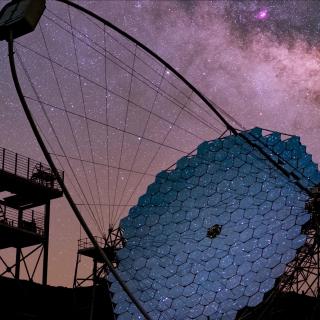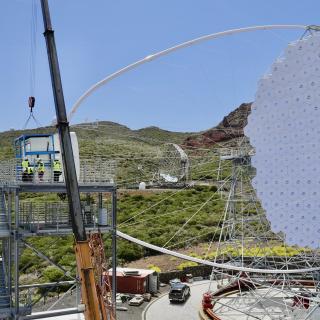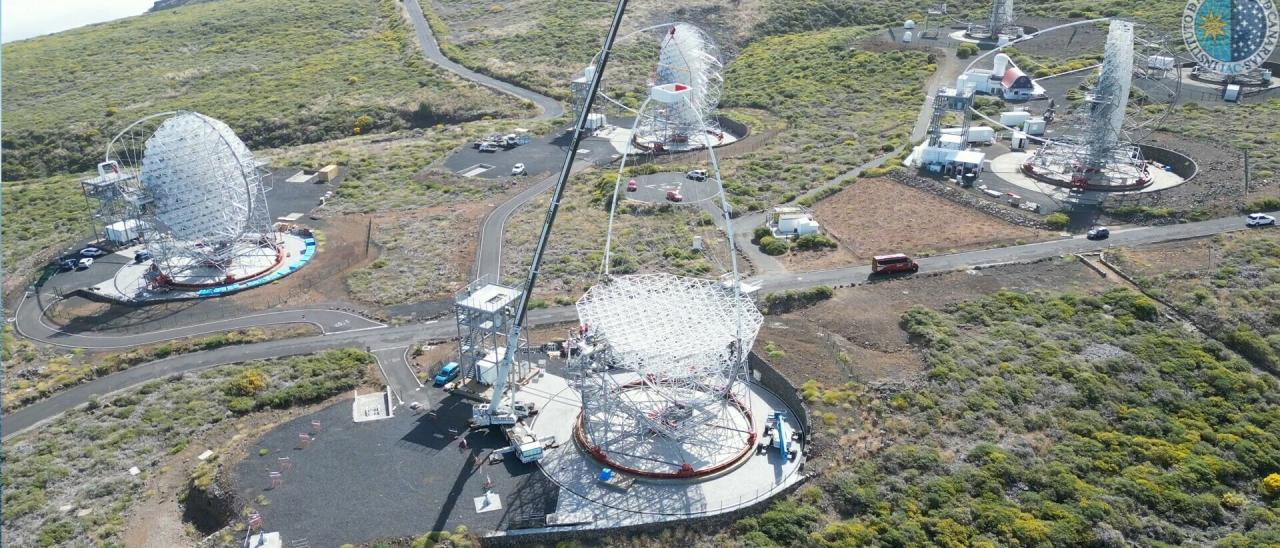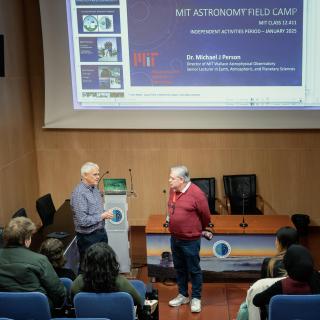The four large sized telescopes of the CTAO on La Palma reach a key milestone in their construction
The LST-2 telescope has successfully completed the installation of its camera support structure (CSS), making it the last of the four Large Sized Telescopes (LST) to reach this important milestone in its construction at the Roque de los Muchachos Observatory of the Instituto de Astrofísica de Canarias (IAC) on La Palma.
This telescope is part of the ambitious CTAO (Cherenkov Telescope Array Observatory) project, which will create the world's largest network of telescopes for the detection of very high-energy gamma rays. The four LST telescopes are being built in the La Palma municipality of Villa de Garafía and represent a key component of the northern site of this international research infrastructure.
The installed CSS consists of a carbon fibre parabolic arc that supports the camera on the main mirror plate. With the addition of this structure, the LST four-telescope array is taking on its impressive final configuration. The choice of carbon fibre as the material is not accidental: it guarantees the stability and lightness necessary for the large structure, while significantly reducing the shadow cast on the telescope camera.

International collaboration in the design and construction
This phase of the LST construction process involved the participation of specialised French institutions and companies. The CSS were designed by LAPP, and their components, tubes, and chamber frames were produced by Lorima, a French company specialised in masts for racing boats.
The installation of the CSS requires a highly technical operation carried out at approximately 50 meters above the ground. The structure had to be secured and stabilised to the mirror using 26 composite tensors, supplied by Future Fibres, a company also specialised in the nautical sector, through INFN-Padova in Italy. The most delicate part of the process involves releasing the CSS crane at this considerable height, a manoeuvre that required the LAPP technical team to train for several years in specialised climbing techniques.
The next steps towards science operations
Following the installation of the CSS,the tensioning cables have been fixed and pre-tensioned, although they have not yet reached their final nominal tension. To complete the mechanical installation, the telescope must still be moved to its parking position and the azimuth brakes installed, operations which are the responsibility of the IAC.
The next phase involves the installation of the scientific equipment, where the IAC assumes responsibility for mounting the cameras, a task pending for the LST-3 and LST-2 telescopes. As part of the environmental commitments of the project, the IAC will also be responsible for the dismantling and environmental restoration of the provisional storage and assembly platforms attached to each telescope, a process scheduled for 2026.
The principal investigator of the CTAO group at the IAC, Ramón García López, states that "the installation of the arch that will support the LST-2 telescope camera marks the completion of the mechanical structure of the four LST telescopes at the ORM. It is a very important milestone. We still need to install the cameras for the LST-3 and LST-2 telescopes, which will take place during the coming year, and which will allow us to begin the commissioning of the world's largest very-high-energy gamma-ray observatory in the Northern Hemisphere."
This important progress marks a decisive step toward the implementation of CTAO at the Roque de los Muchachos Observatory, which will revolutionise our understanding of the high-energy universe and consolidate the Canary Islands Observatories as a world leader in astrophysics.
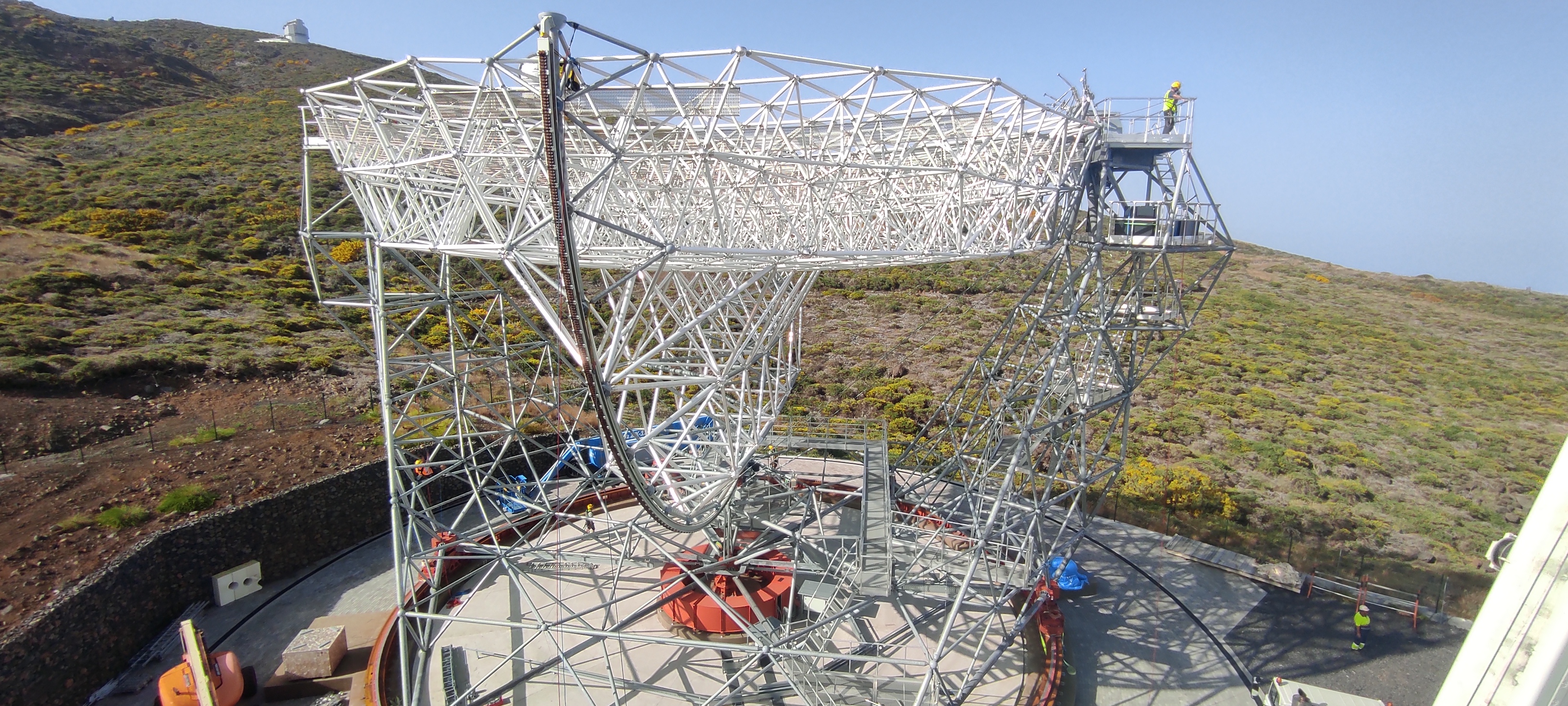
The IAC's activities under the project "The Four Large Size Telescopes (LST) of the CTA-North at the ORM" (Reference ESFRI-2017-01-IAC-12) are funded by the Ministry of Science, Innovation and Universities (MICIU), 85% co-financed by European Regional Development Funds (ERDF). The activities are also funded by the Government of the Canary Islands, through the Canary Islands Agency for Research, Innovation and the Information Society (ACIISI), of the Department of Universities, Science, Innovation and Culture.
Contact at the IAC
Ramon García: ramon.garcia.lopez [at] iac.es (ramon[dot]garcia[dot]lopez[at]iac[dot]es)

